

Each October we celebrate Sensory Awareness month. Our campaigns always aim to increase mainstream understanding of the importance of sensory integration and processing. Always seeking to help people better understand the impact on function and participation.
In 2020, Sensory Awareness month was no different but our campaign was.
This past October we partnered with artist and illustrator Jacinta Read to bring you five very special stories. The characters in these stories are very dear to our hearts. They are all based on real-life and all highlight the incredible importance of sensory integration and processing for health and well-being.
If you are interested in supporting our sensory awareness month fundraising campaign you can donate now and help us reach our goal of raising $10,000 for education and advocacy outreach.
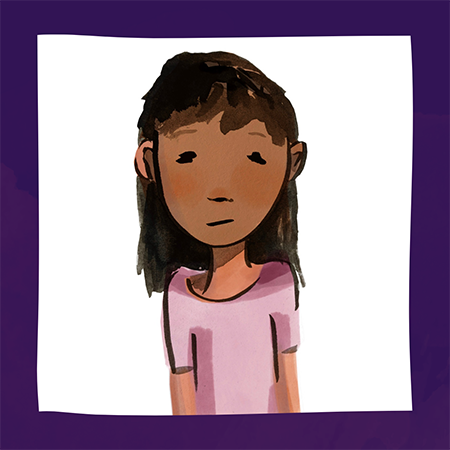 Meet Laura.
Meet Laura.
Meet Laura she’s 6 years old, she likes watching Spirit, swimming and splash pads. Laura has three older sisters and has been excited about starting Kindergarten for months. Every morning on the walk to school Laura and her Mom talk about the coming day. Laura really hopes each day that she will make her teacher smile and get a happy face on the wall.
Laura doesn’t realize that it is unusual to find school as hard as she does. When the teacher starts giving instructions Laura’s brain quickly gets overwhelmed and she only remembers parts of what was said.
Uh-oh. Laura’s done it again. In her enthusiasm she only remembered one part of the instructions and started cutting up her worksheet before she completed all the other tasks. She’s not even cutting up her paper very well. Her friends know what is coming next, the teacher won’t be happy.
Laura’s teacher is furious. To her it seems like Laura deliberately breaks the rules every day. Doing whatever she wants, not listening to any instructions and clowning around with a big smile on her face. There have been three weeks of term and already Laura is being sent to the principal's office for the eighth time. The teacher suspects that Laura will be expelled from Kindergarten before this term is finished.
Laura sits outside the principal’s office hurt and confused. Every morning she starts the day enthusiastic and optimistic but before recess she always ends up doing something wrong. Laura’s starting to think that maybe school isn’t for her, maybe she is a bad kid and maybe she’ll never enjoy school like her big sisters did.

Sensory Health Supports School Success
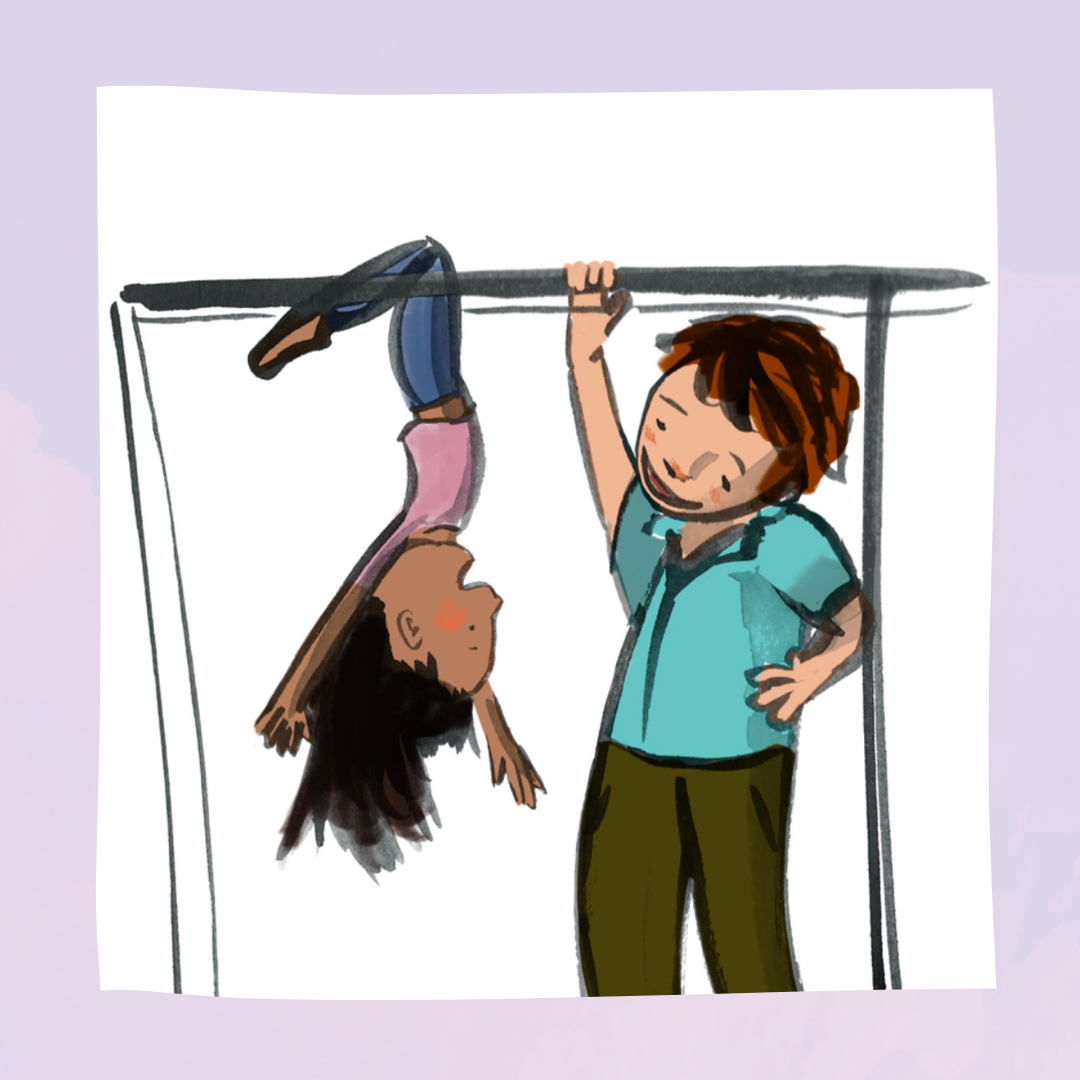 The principle of Laura's school realizes that Laura would probably benefit from an Occupational Therapy assessment. The assessment shows that Laura is dyspraxic - this means that understanding multi-step instructions and making a plan for action are really hard for her. Laura's Occupational Therapist works with her parents and her school to put in place the supports she needs. She also learns how to organize her actions through big exciting gross motor play, Laura's parents get to play too!
The principle of Laura's school realizes that Laura would probably benefit from an Occupational Therapy assessment. The assessment shows that Laura is dyspraxic - this means that understanding multi-step instructions and making a plan for action are really hard for her. Laura's Occupational Therapist works with her parents and her school to put in place the supports she needs. She also learns how to organize her actions through big exciting gross motor play, Laura's parents get to play too!
As Laura starts to feel competent in her own body on the big play equipment the teacher starts to notice she is more organized in the classroom, she waits until she really understands tasks and she asks for help when she needs it. Laura is an asset to her class, her enthusiasm for learning is infectious and she is incredibly kind to the other children.
Laura was at risk of being expelled from school because of unidentified differences in sensory integration and processing. At STAR Institute we see a lot of Lauras (and Georgies and Elizabeths too) and the thing is most of the time it wasn’t at all necessary for things to get as bad as they did at home, or at school or in the workplace.
Downloadable Resource
Download Laura's story. If you print with the "short binding" setting these read much like a children's book.
Laura English | Laura German/Deutsch | Laura Italian/Lingua Italiana | Laura Spanish/Lengua Española | Laura Chinese | Laura Arabic
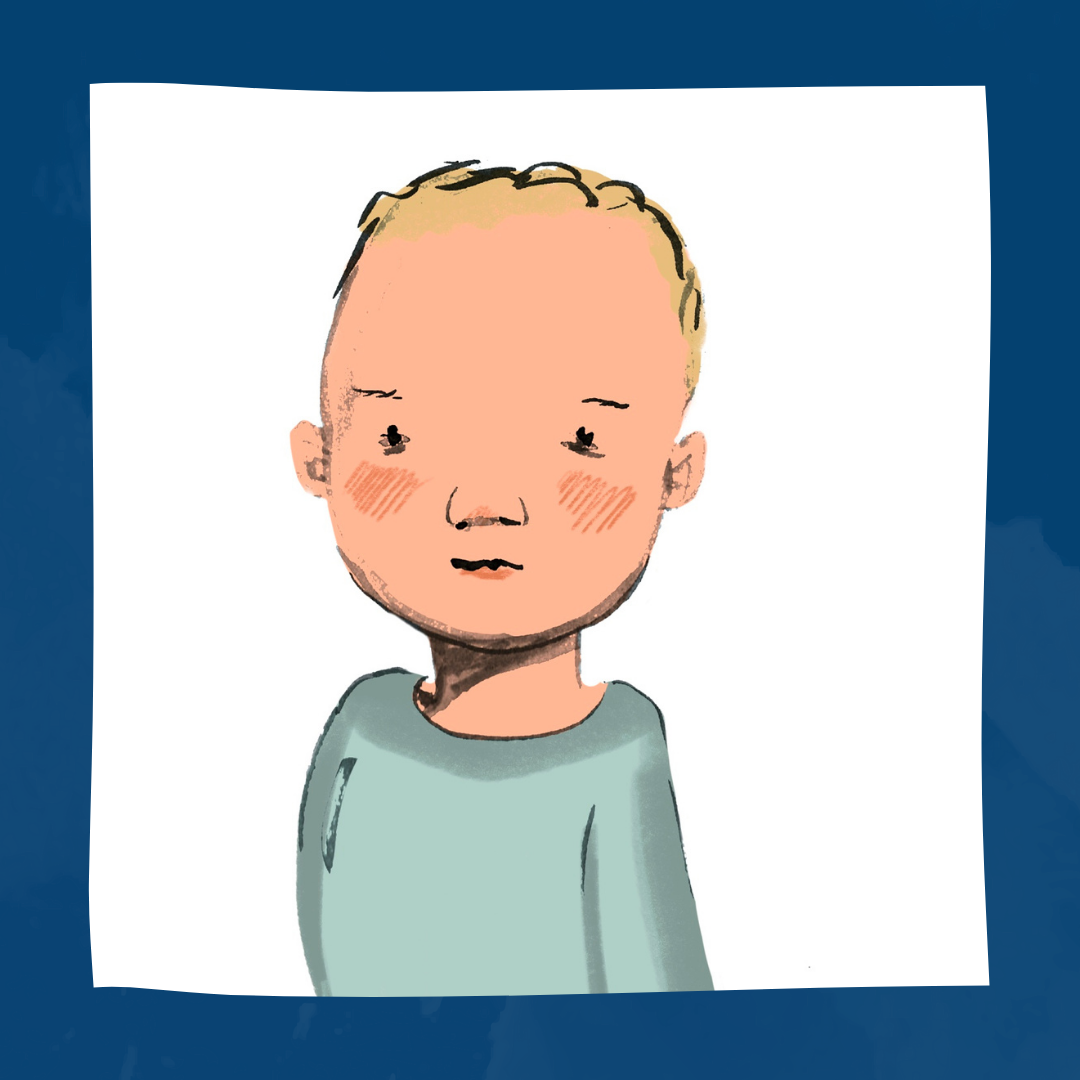 Meet Matteo.
Meet Matteo.
Matteo is 11 months old, he loves to sit and play with his favorite activity cubes and his cause and effect toys that sing songs and flash bright lights. He is happiest when life is predictable and he gets to play quiet games with Mom, he loves when they lie on the bed together and hide under the sheets. Matteo isn’t interested in the push along and ride along toys like his friends are yet.
Matteo’s Mother is attentive, sweet and gentle, she adores him although she wishes he would sleep more. Throughout the day Matteo fusses and cries unless he’s left alone on the floor where he sits with his legs in a W shape or lies on his back.
Matteo hates having his diaper changed because it is so difficult for him to move against the pull of gravity when is moved or tipped backwards. At times he gets so upset that it is almost impossible to clean him or put on the new diaper.
Matteo experiences changes in position as catastrophic events. What looks to others, including professionals as a “fussy baby”, to Matteo is a natural response to the massive sense of shock and danger he feels when his body is being moved around in space. Especially if he is tilted backwards in space. Matteo has very little ability to stabilize his head and body when moved out of an upright position which means he is totally dependent on the adult moving him. He seems anxious all the time particularly when he is being moved as he is unable to anticipate how his body will respond.
Matteo’s Mother is exhausted and desperate. Matteo can only sit up-right and still enough for eating in the foam one piece seat that rests on the counter top. He isn’t gaining enough weight and the transition to solid foods is going badly with lots of spitting out, gagging and crying. It’s not just Matteo who cries at mealtimes!
Mom has been asking her family and friends for advice and they all just tell her that Matteo will grow out of it. Going anywhere is a disaster as Matteo screams and cries as soon as he sees the car seat. Once he cried for the full three hour journey to Grandma’s house - as soon as they arrived Grandma scooped him up and cradled him in her arms and he stopped crying and fell asleep. Why doesn’t he do that for Mom?

Within the first year of life infants are learning to regulate their bodily functions and body-based responses to the world. They are also learning to move and this starts long long before sitting, cruising or crawling develop. Before even lifting the head against gravity. When lying on their back, very young infants move their legs upwards in space and bring their hands together or their hands to their feet. This helps them start to learn about their body, movement and cause and effect. Watching objects move around the world involves coordinating the two eyes and keeping the head steady. If sensory processing differences impact the development of posture, these very first milestones might be compromised. These infants feel most secure when nothing is moving and they have a wide base of support - like lying flat on their backs. Or as they get older perhaps staying in the seated position they have been put in. Often with postural delays there are difficulties understanding and using information from the muscles and joints that tell you about gravity. Most people take this information for granted. Being moved, being tipped back in space, or unexpected movements (even small ones) can all be incredibly stressful to the nervous system. A fussy unhappy baby might be posturally insecure and every movement might feel like an earthquake, an unpredictable event, a potential disaster waiting to happen. The constant lack of a sense of safety and the need for excessive vigilance for even the possibility of movement will have a cascading negative impact on all other areas of development including the infant-mother relationship.
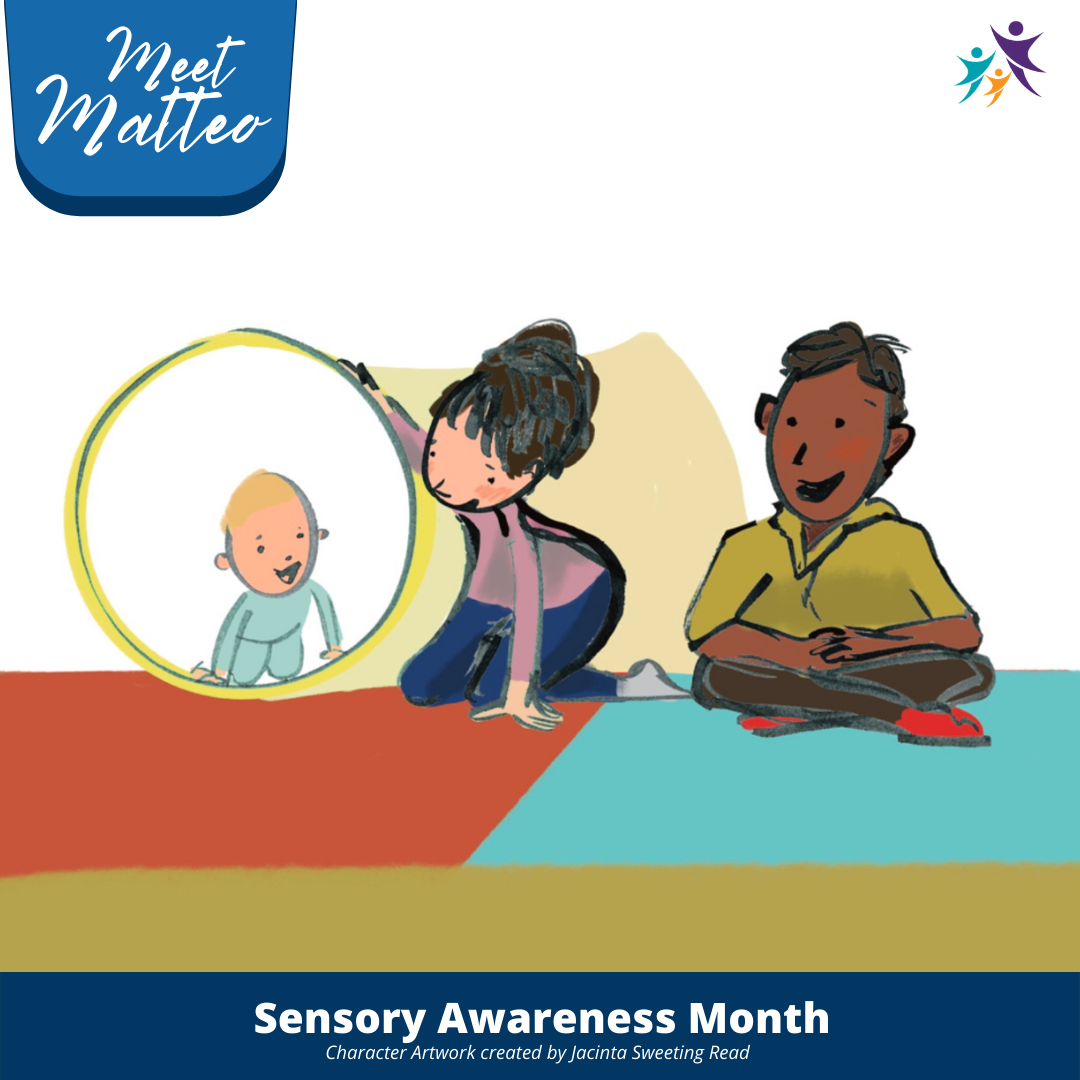
Sensory Health Supports Development
Matteo’s Grandma had a friend visiting that day who used to work as an early childhood specialist and she noticed that he might benefit from an Occupational Therapy evaluation. With Grandma’s permission she offers his Mom advice about seeking an assessment – in Mom’s home state a screening happens very quickly, and the family are offered twice monthly visits. Grandma and her friend know that this isn’t good enough and all the grandparents get together to pay for a private evaluation and treatment program at a center that specializes in sensory integration and young children.
Matteo’s occupational therapy evaluation showed significant differences in development of posture motor skills and immature postural control . Mom and Matteo start an intensive therapy program that coaches Mom and helps give Matteo the structured movement he needs through fun, child led and play based activities. Mom tells the OT “I really feel like Matteo and I have fallen in love with each other through these sessions”. Matteo is happier throughout the day, sings songs with Mom, is able to sit in a highchair, reach for toys, and eat and breathe all in the right order. He still doesn’t really like car seats but both Mom and Matteo are happier and their relationship is healthier than ever before.
Does Matteo’s story sound familiar to you? Unidentified sensory processing differences can have a tremendous impact on the early years of life. For support finding a sensory integration and processing assessment reach out to your early intervention program, local Occupational Therapist with specialized training in sensory and infants /toddlers or contact us at STAR Institute and we'd be happy to guide you.
Sensory Health Transforms Lives
Matteo’s unidentified differences in sensory integration and processing were impacting his relationship with his primary caregiver and the development of his sense of self. He was at the mercy of those around him for movement and rarely felt safe and stable. Development of eating and self care skills were already being impacted even at this early age.
Accurate identification of differences in sensory integration and processing in infancy is a possibility and should be available to all families regardless of background and geographic location.
Downloadable Resource
Download Matteo's story. If you print with the "short binding" setting these read much like a children's book.
Matteo English | Matteo German/Deutsch | Matteo Italian/Lingua Italiana | Matteo Spanish/Lengua Española | Matteo Chinese | Matteo Arabic
 Meet Bess.
Meet Bess.
Meet Bess, she’s 35 and is a clinical laboratory scientist. Bess likes fine foods and live folk music. Bess has been with her partner for 14 years and they have two children. Bess found parenting her oldest child, who is seven years old, easy, and natural. Her second child is three years old and the fit hasn’t come quite as easily. Bess often feels that she is dealing with a baby who goes from 0-60, cries too quickly and for too long. Bess mostly enjoys her weekly coffee morning with the other Mom’s although she definitely feels that she often misses what is going on and is the last to laugh at the jokes.
Bess is enjoying her latte and talking to her friend. There’s a lot of background noise but it doesn’t bother her at all. Bess’s friend comments “I just admire you so much Bess, how do you do it?”. To her friends, it looks like Bess has tuned out her son's fussiness. Bess is horrified, she always seems to be the last one to notice that the crying child is her son. It’s awful when this happens in public.
Another Mom that Bess doesn’t know well comments “You just seem to block out his fussiness and it doesn’t bother you at all.” Bess can’t tell if the woman thinks this is a genuine compliment or if it is an outright criticism. Now her friendly coffee morning feels like a disaster. This often happens at her sister’s house too--comments about Bess ignoring, not paying enough attention, and being self-absorbed.
Bess hates that her youngest child regularly gets so upset and she feels hurt by the suggestion that she is deliberately ignoring signs of distress. She loves her kids. She longs for a peaceful life and feels guilty that she misses the rhythm of “how things were” before her second child was born. When it was just her partner and her oldest child things seemed to go so smoothly. She has a good life, why is this part so hard?

Sensory Health Supports Relational Health
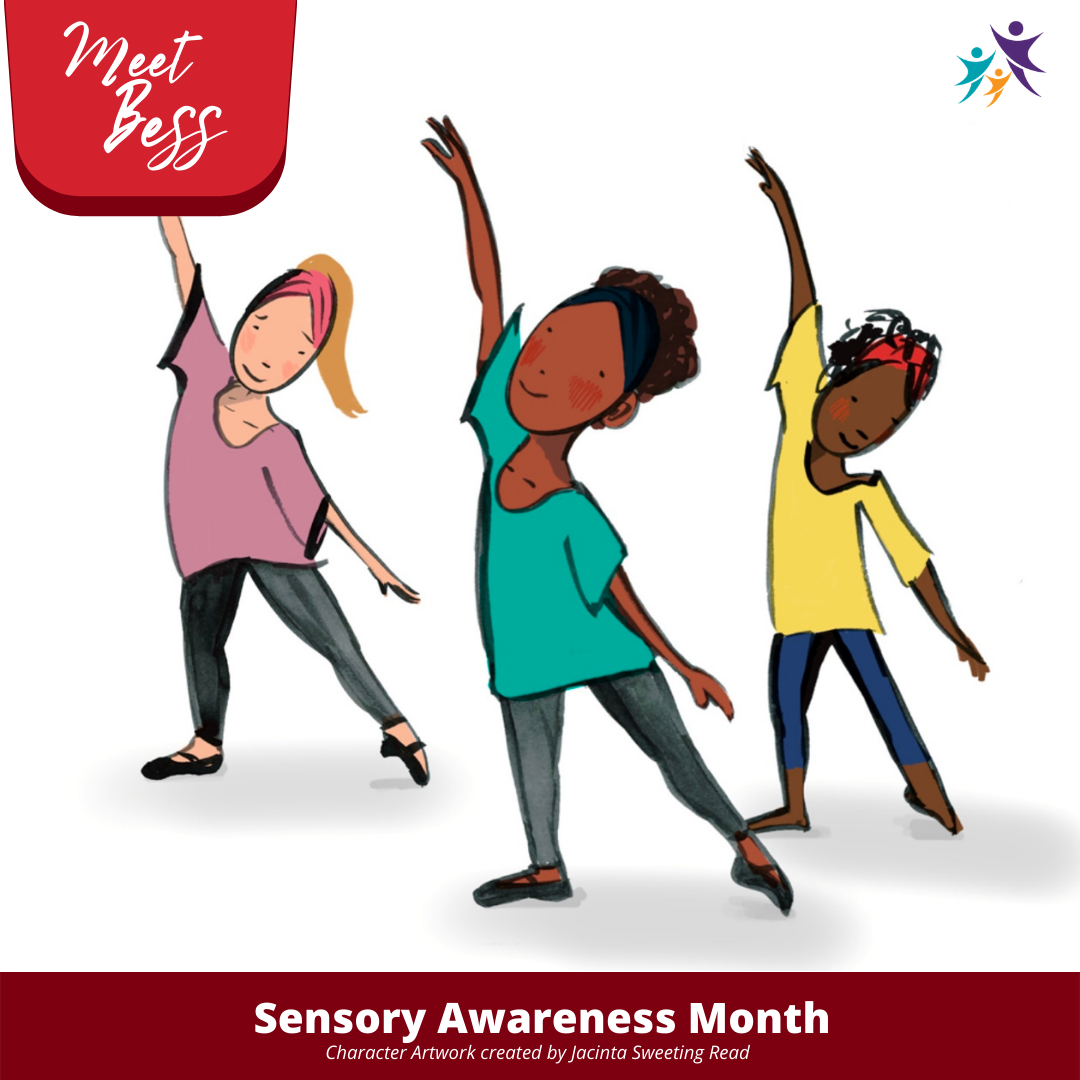 Bess starts to reflect on comments people have made since she was in Grade 5 - that she comes across as low energy, misses what’s happening the moment, sometimes even that she seems depressed. Bess decides to seek support from a counselor and after two sessions together the counselor suggests that she explore the possibility that the way she processes sensation is different and might impact how she responds to the world and her relationships. Bess discovers that she is sensory-under-responsive - which means that she does not register sensory input until it is very intense. Bess is under-responsive to sound, visual, and touch sensations. She learns that the way she processes movement and position is a strength and has an “aha!” moment as she remembers how good she used to feel when she was dancing two or three times a week. Bess takes dance up again and builds a sensory lifestyle that nourishes her nervous system. She finds she is more alert to the world around her and available for all her relationships. Even her work colleagues comment on the difference. Bess and her youngest child bond and learn to play together and communicate with one another.
Bess starts to reflect on comments people have made since she was in Grade 5 - that she comes across as low energy, misses what’s happening the moment, sometimes even that she seems depressed. Bess decides to seek support from a counselor and after two sessions together the counselor suggests that she explore the possibility that the way she processes sensation is different and might impact how she responds to the world and her relationships. Bess discovers that she is sensory-under-responsive - which means that she does not register sensory input until it is very intense. Bess is under-responsive to sound, visual, and touch sensations. She learns that the way she processes movement and position is a strength and has an “aha!” moment as she remembers how good she used to feel when she was dancing two or three times a week. Bess takes dance up again and builds a sensory lifestyle that nourishes her nervous system. She finds she is more alert to the world around her and available for all her relationships. Even her work colleagues comment on the difference. Bess and her youngest child bond and learn to play together and communicate with one another.
Does Bess’ story sound familiar to you? For support with an assessment of sensory integration and processing reach out to your local sensory certified occupational therapy practice or contact us at STAR and we'd be happy to guide you. There are more and more practitioners out there who specialize in supporting adults with these differences.
Sensory Health Transforms Lives
Unidentified differences in sensory integration and processing were impacting Bess’ ability to enjoy life and bond with her youngest child. Had she known that her body’s sensory preferences and capacities impact her ability to tune into the world around her she could have proactively cultivated a healthy sensory lifestyle. Sensory processing is more than the “five sense” taught in elementary school and we think it’s time that the whole world understands the power of sensory health for psychological well-being.
Downloadable Resource
Download Bess's story. If you print with the "short binding" setting these read much like a children's book.
Bess English | Bess German/Deutsch | Bess Italian/Lingua Italiana | Bess Spanish/Lengua Española | Bess Chinese | Bess Arabic
 Meet Georgie
Meet Georgie
Meet Georgie. Georgie is 18 years old. They like hanging out with friends, playing Animal Crossing and enjoying a good burger.
Their home life has always been chaotic and no one really understands why. Georgie loves their parents who are warm, open and caring. However, Georgie’s parents have found parenting hard, describing Georgie as explosive, obstructive, oppositional and always on a hair trigger.
Georgie has been asked to do the washing up after dinner. They want to try, they want to be part of the family team. But dinner has already pushed George to a pretty high state of stress. This always happens when activities involve a lot of noise, smell, taste and touch. Georgie prefers predictable foods (like burgers) and mealtimes with very little conversation. Being asked to do the washing up is hard for Georgie, because the sounds, smells and gross feelings are all really stressful.
When Georgie’s little sister starts playing the drums in the background, it is just too much. Georgie explodes, “I can’t take this anymore,” and storms upstairs. Georgie’s parents are dismayed that this has happened again, their youngest is now upset, the dishes aren’t finished, and once again Georgie’s temper has ruined a family meal. Georgie’s parents are truly fed up.
Georgie is alone in their bedroom again. They know it doesn’t have to be like this, that their parents are nice people, but it’s so confusing. Why is everything so hard? Why is there always a fight? Georgie is desperate not to be seen as a bad kid anymore, and they long for connection with their family.
When your nervous system interprets everyday sensory data as intense, disgusting, too-much, overwhelming or even dangerous, your brain and body tend to live in a constant state of fight-or-flight readiness. Multiple studies have shown us over the last twenty years that a state of constant sensory-over-responsivity can have lasting negative impacts on well-being, sense of self and relationships. Two 2004 studies showed that sensory anxiety relates to relational anxiety and depression, and a 2020 study showed that sensory sensitivity is associated with anxiety disorder diagnoses and difficulties with emotion regulation. Your sensory health, including the way you build your lifestyle around your sensory profile, matters. If sensory integration and processing are so pivotal for psychological and relational well-being, why don’t more people talk about it? Why does it take some people until adulthood to hear about this important area of human development?

Sensory Health Supports Self Regulation
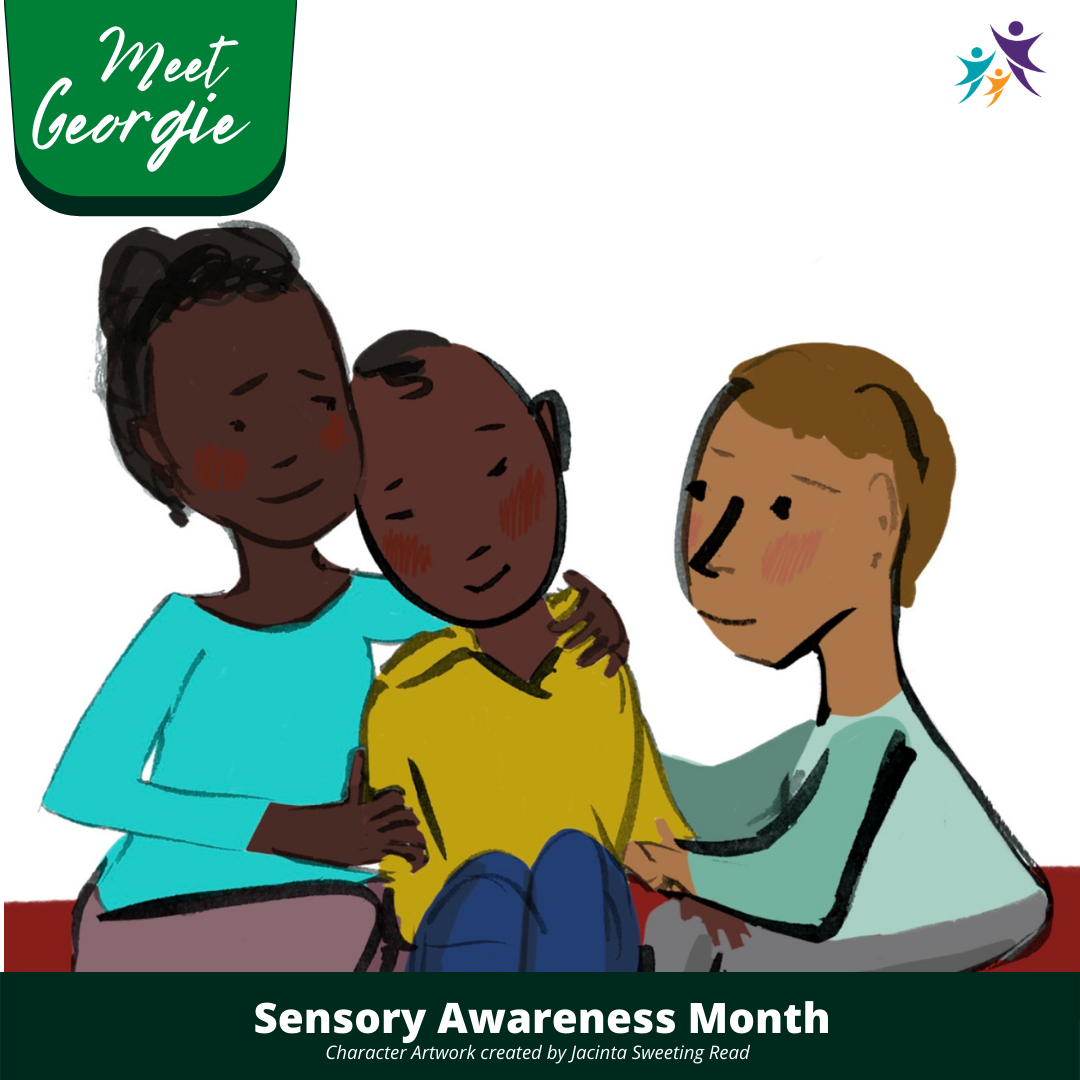 Georgie sits down and does some research. They come across a checklist for differences in sensory processing and check 80% of the statements. Georgie is able to share this with their parents, and they all agree to approach the local adolescent occupational therapist who specializes in sensory integration and processing.
Georgie sits down and does some research. They come across a checklist for differences in sensory processing and check 80% of the statements. Georgie is able to share this with their parents, and they all agree to approach the local adolescent occupational therapist who specializes in sensory integration and processing.
Georgie’s occupational therapy evaluation demonstrates significant sensitivities to touch, sound, taste, smell and movement in the field of vision. All of these sensations push Georgie into a heightened state of vigilance, causing their nervous system to go into high alert. Any other stressors then quickly push Georgie into a state of fight or flight. This has never been something Georgie can control with mind-over-matter. Georgie starts seeing a mental health provider and an occupational therapist who work with the whole family to start building a nourishing sensory lifestyle that will enable Georgie not just merely to survive, but also to thrive.
Does Georgie’s story sound familiar to you? For support with sensory over-responsivity, sensory anxiety, and/or a sensory integration and processing assessment, reach out to your school, local sensory-focused occupational therapy practice, or contact us at STAR Institute and we'd be happy to guide you.
Sensory Health Transforms Lives
Unidentified differences in sensory processing can undermine health and well-being at any age and in any context. If you are over-responsive to the sensory data from the world around you and from your own body, everyday life can feel like a battleground. Simple sounds, smells and touch sensations put your nervous system into a state of defensiveness and hyper-vigilance. The extra effort it takes to operate in a world that is not designed to support your sensory systems can lead to chronic dysregulation, anxiety/depression, and problems forming relationships.
Downloadable Resource
Download Georgie's story. If you print with the "short binding" setting these read much like a children's book.
Georgie English | Georgie German/Deutsch | Georgie Italian/Lingua Italiana | Georgie Spanish/Lengua Española | Georgie Chinese | Georgie Arabic
 Meet Mizba
Meet Mizba
Content Warning - self-harm / suicidal ideation. Mizba’s story contains a serious mental health crisis and may be upsetting to read.
Meet Mizba. Mizba is 11 years old. She likes soccer, 3-D printing and reading, especially the Aru Shah book series. Mizba is in the gifted and talented stream at school and always the first to be picked for the Brain Bowl competition. She’s always enjoyed participating in tumbling class and wants to get into organized sports but finds them difficult. She doesn’t have anyone to sit with at lunch and doesn’t get invited for playdates after school.
Mizba makes learning look easy, but this takes a lot of effort as she finds school incredibly stressful. Organizing her tools, finding items in her bag, zipping her pencil case, sitting still in her chair and gently closing the classroom door are all tasks that require a lot of effort for Mizba. Now in middle school it’s even more stressful - managing her materials, accessing and organizing a locker, keeping to her class schedule. The only thing she feels successful at is following the rules and getting A+ grades. Mizba’s geography paper comes back marked as a B, the teacher knows this is unusual and tells Mizba not to worry.
Mizba panics--she worries this may mean she won’t make the honor roll; her perfect streak has been completely broken. Mizba’s “battery” always runs on low as she works super hard to be organized in the school environment. Her challenges with social confidence and initiation drain her, so when she gets home from school she is fatigued and sad. She doesn’t have the ability to bounce back from this small knock. It feels like the world is closing in.
Mizba told her parents that she feels ill and now she is falling apart alone in her room. She feels deep despair, exhausted and empty. Her heart physically hurts, as the tears fall freely she bites her lip to keep from wailing in pain at the sense of panic and hopelessness. Mizba starts to think about some drastic ways to end these terrible feelings.
Sometimes differences in sensory integration mean that we register or notice sensation but we are unable to discriminate what it means. When this happens we can easily be confused in busy dynamic situations where we are asked to multi-task and organize ourselves on tight deadlines. We may need to go slower than our peers in order to respond appropriately to task demands. Every year students in middle and high school who have “held it together” despite differences in sensory processing suddenly hit a crisis point as school demands and sensory motor demands converge and become too much, too heavy and unbearable. By this point mental health support and Occupational Therapy usually need to work together to provide effective support for building psychological well-being. Struggling to overcome unidentified differences in sensory integration and processing can result in delays developing social competence, confidence and problem solving skills. Our resilience - our ability to recover from stress - can be compromised and we become at risk for dramatic declines in mental health.

Sensory Health Saves Lives
 Mizba’s Dad decides to check on her after she ignores the calls to dinner. He finds her distraught, looking up some very upsetting videos on the internet and trying to hide what she is doing. Mizba’s parents take her to see a counselor who happens to be well trained in the importance of understanding sensory integration.
Mizba’s Dad decides to check on her after she ignores the calls to dinner. He finds her distraught, looking up some very upsetting videos on the internet and trying to hide what she is doing. Mizba’s parents take her to see a counselor who happens to be well trained in the importance of understanding sensory integration.
Mizba and her counselor work briefly with an Occupational Therapist and Mizba gets a full sensory integration evaluation. Together they discover that Mizba has significant differences discriminating and discerning the meaning behind sensation. She finds it difficult to locate items by touch or by vision alone, do up fasteners and successfully complete fine motor tasks. Following the recommendations of the occupational therapist Mizba and her family, with her counselor, build a sensory lifestyle that includes fun, joy and successful relationship building with peers. Mizba starts to heal and learns that she is good at more than just academics!
Does Mizba’s story sound familiar to you? For support finding a sensory integration and processing assessment reach out to your school, local sensory certified occupational therapy practice or contact us at STAR Institute and we'd be happy to guide you.
If you, a family member, friend or colleague expresses thoughts of self harm or suicide please call your national suicide prevention lifeline immediately. In the USA this number is 800-273-8255.
Sensory Health Transforms Lives
We have eight open sensory systems that work together to help us make meaning of the world around us: sight, taste, smell, touch, sound, body position, internal well-being and sense of motion/equilibrium. The way our bodies integrate and process sensation from all these systems is truly wonderful and highly complex. Everyone benefits from a better understanding of how sensory processing impacts health and wellness. An Occupational Therapist who is certified in sensory integration is a good place to start but every teacher, mental health professional, parent, and person-who-works-with-humans also needs a better understanding of this area of human development.
Downloadable Resource
Download Mizba's story. If you print with the "short binding" setting these read much like a children's book.
Mizba English | Mizba German/Deutsch | Mizba Italian/Lingua Italiana | Mizba Spanish/Lengua Española | Mizba Chinese | Mizba Arabic

